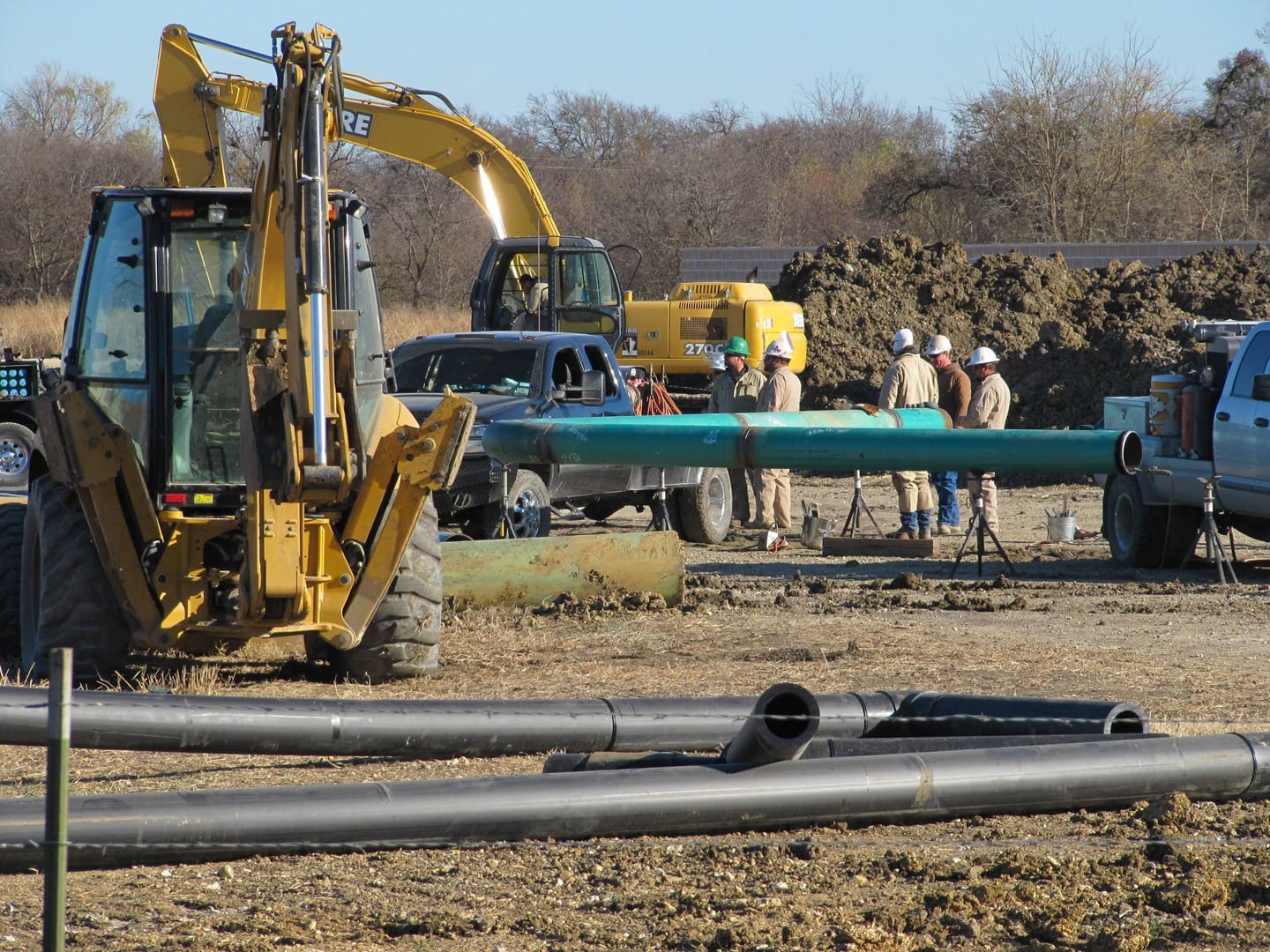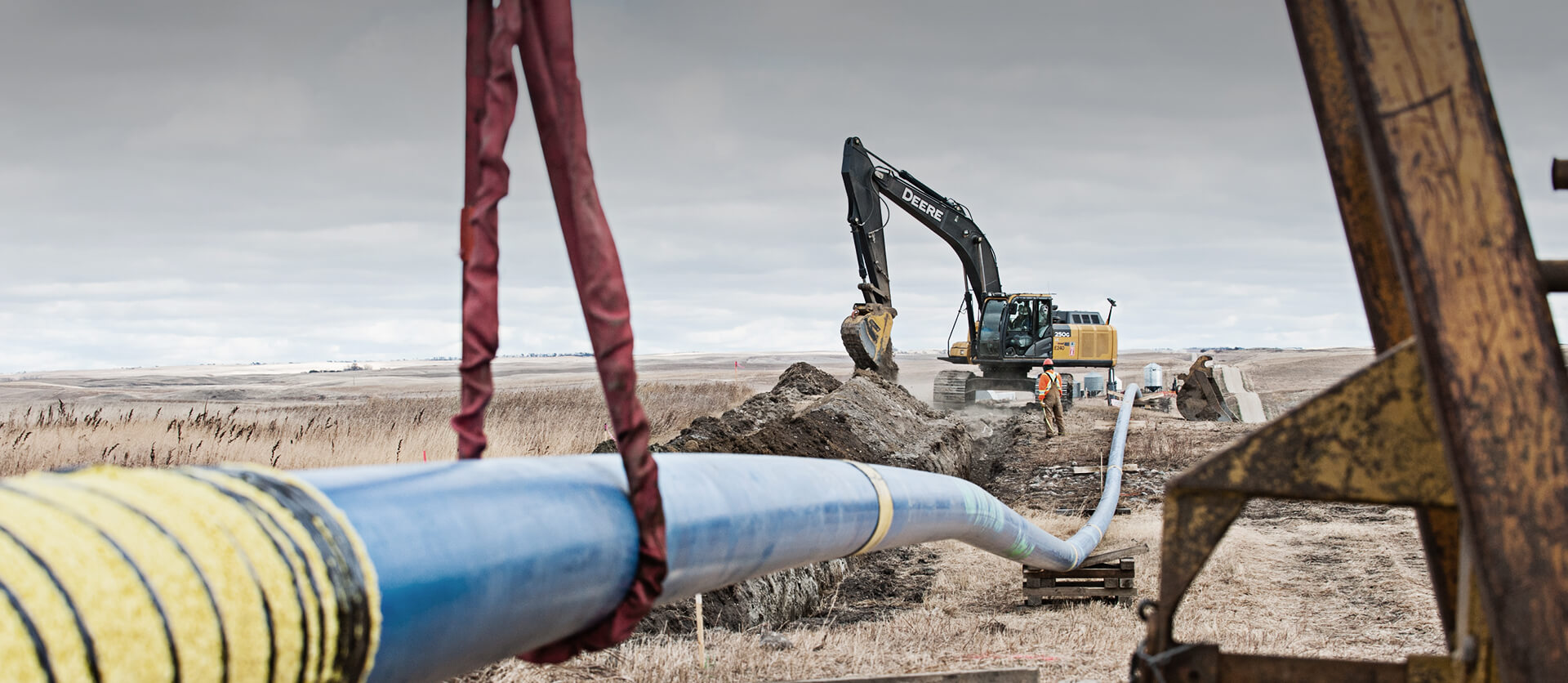7 Questions to Ask Before Contracting Pipeline Construction Services
Exploring the most up to date Advancements in Pipeline Construction Providers for Modern Projects
The Pipeline Construction industry is going through considerable modifications. Developments such as clever products and robotics are improving standard methods. These advancements guarantee to improve efficiency and security. In addition, AI modern technologies are boosting project monitoring capacities. As these components merge, they question concerning their long-term influence on sustainability and cost. Understanding these advancements is vital for stakeholders wanting to browse this progressing landscape. What effects do they hold for future tasks?
The Rise of Smart Materials in Pipeline Construction
As the demand for a lot more reliable and sustainable Pipeline systems raises, the assimilation of smart products has actually become a transformative service in Pipeline Construction. These sophisticated products have distinct residential properties that improve the performance and long life of pipes. As an example, self-healing polymers can immediately fix minor leaks, substantially decreasing maintenance costs and downtime. In addition, materials embedded with sensing units can monitor structural honesty and ecological conditions, enabling real-time information collection and evaluation.
Smart materials are commonly light-weight and corrosion-resistant, which not just simplifies installment however also prolongs the life-span of the systems. Their versatility makes it possible for pipelines to endure severe ecological problems, promoting security and integrity. As sectors significantly focus on sustainability, making use of eco-friendly wise products adds to minimized environmental effect. On the whole, the rise of smart products notes a noteworthy shift in Pipeline Construction, leading the way for ingenious options to satisfy contemporary facilities demands.
Developments in Robotics for Installation and Maintenance
The assimilation of clever products in Pipeline Construction is matched by developments in robotics, which are reinventing setup and upkeep processes. Robotic technologies, such as automated welding systems and drones, enhance performance and accuracy, decreasing human mistake and minimizing safety and security threats. These robots can run in tough atmospheres, making sure that installations are carried out in remote or unsafe areas without placing employees at threat.
Robotic inspection tools furnished with advanced sensing units offer real-time data on Pipeline honesty, permitting for proactive upkeep. They can discover leakages or architectural weak points, enabling timely interventions that extend the life-span of Pipeline systems. Using robotics not only increases the Construction timeline however also maximizes resource allocation, causing set you back savings. As these technologies remain to advance, they are readied to play a vital role fit the future of Pipeline Construction, making certain integrity and sustainability in facilities growth.
AI-Driven Project Administration Equipment Changing Process
AI-driven task monitoring tools are reshaping process in Pipeline Construction by enhancing decision-making processes through better access to real-time data analytics. These devices enable teams to react promptly to project advancements, therefore increasing performance. Moreover, structured interaction networks foster collaboration among stakeholders, additionally maximizing task outcomes.
Improved Decision-Making Processes

Real-Time Data Analytics
Utilizing real-time data analytics, contemporary job administration tools revolutionize process in Pipeline Construction. These sophisticated tools leverage expert system to provide instantaneous understandings right into task efficiency, source appropriation, and possible threats. By continually keeping track of key efficiency signs, groups can swiftly adapt to changing conditions, maximizing labor and products usage. The combination of real-time information enables more informed decision-making, reducing delays and minimizing prices. Additionally, predictive analytics can identify trends and projection difficulties before they rise, enhancing overall job effectiveness. Because of this, Pipeline Construction companies that embrace these AI-driven tools can improve project timelines and results, guaranteeing they remain affordable in an increasingly intricate sector landscape. This technology notes a significant change toward data-centric management practices.
Structured Communication Networks
Reliable interaction is critical in Pipeline Construction, where countless stakeholders need to collaborate flawlessly to assure project success. The intro of AI-driven job administration tools has actually transformed interaction networks within the industry. These tools promote real-time details sharing, allowing teams to accessibility updates, share files, and track progress effectively. By automating regular tasks and offering a centralized system for interaction, these advancements eliminate misconceptions and decrease hold-ups. Enhanced exposure right into job timelines and source allotment promotes liability among employee. Additionally, AI analytics can identify potential interaction voids, guaranteeing positive analytic. Ultimately, streamlined interaction networks not just boost process however additionally boost total project efficiency, making it possible for Pipeline Construction companies to meet contemporary needs properly.
Enhanced Safety Protocols Via Innovation Integration
The assimilation of innovation in Pipeline Construction has actually resulted in enhanced security procedures. Real-time surveillance systems, wearable safety and security tools, and automated right here threat assessments are now vital elements in lessening hazards on job websites. These innovations not just enhance worker safety but likewise simplify conformity with market policies.
Real-Time Monitoring Systems
Exactly how can real-time monitoring systems transform Pipeline Construction safety and security methods? By incorporating innovative modern technology, these systems supply constant monitoring of Construction tasks, making sure instant detection of potential hazards. Cams and sensors can keep track of environmental problems, devices performance, and labor force activities, providing crucial data in actual time. This aggressive technique allows task managers to identify risks prior to they escalate, greatly boosting security steps on-site. In addition, real-time tracking facilitates conformity with governing demands, making certain that security criteria are fulfilled constantly. The ability to assess data immediately sustains enlightened decision-making, allowing prompt interventions. Because of this, Pipeline Construction jobs can run much more successfully while protecting the well-being of workers and reducing mishaps, thus reinventing the market's security landscape.
Wearable Safety Tools
Regularly, wearable safety and security devices are being incorporated into Pipeline Construction to boost safety procedures. These innovative tools, consisting of clever helmets, vests, and wristbands, are made to keep an eye on employee wellness and environmental conditions in real-time. Furnished with sensing units, these tools can discover dangers such as toxic gas exposure, excessive warm, or high sound levels, supplying prompt signals to supervisors and workers. Additionally, wearable innovation usually consists of GPS tracking attributes, allowing for reliable location tracking of workers on-site. This ability not only aids in quick response during emergency situations yet additionally boosts total task monitoring. By focusing on employee security through modern technology assimilation, Pipeline Construction firms are making considerable strides in reducing accidents and promoting a culture of safety and security within the market.

Automated Danger Assessments
While standard threat assessments commonly count on hands-on examinations, the assimilation of automated threat evaluation modern technologies is transforming safety procedures in Pipeline Construction. These sophisticated systems leverage information analytics, artificial intelligence, and artificial intelligence to identify prospective risks much more accurately and efficiently. By continuously keeping an eye on ecological conditions, devices condition, and worker habits, automated analyses provide real-time understandings that improve decision-making. This positive strategy decreases the chance of accidents and boosts conformity with safety and security laws. Furthermore, automated danger assessments can be upgraded promptly, making sure that all stakeholders have accessibility to the newest info. As a result, Pipeline Construction tasks take advantage of a more secure job environment, reducing disruptions and promoting a culture of security with technology integration.
Lasting Practices in Pipeline Construction
As the demand for power facilities increases, the Pipeline Construction industry significantly prioritizes lasting techniques that reduce ecological impact. Business are adopting environment-friendly products and innovative Construction techniques to decrease their carbon impact. The usage of trenchless technology permits for Pipeline installment with very little interruption to the surrounding atmosphere, preserving natural habitats and decreasing dirt disintegration.
Protecting In addition, the application of renewable resource sources, such as solar or wind, to power Construction activities is getting traction. This change not only lowers dependence on fossil gas but likewise improves the overall sustainability of Pipeline jobs. Efficient waste administration methods, including reusing and recycling products, are ending up being standard in the sector.
Real-Time Surveillance and Anticipating Maintenance Solutions
The shift in the direction of sustainable techniques in Pipeline Construction has led the means for the combination of real-time surveillance and predictive upkeep remedies. These innovations take advantage of progressed information and sensing units analytics to continually evaluate Pipeline integrity and operational performance. By gathering data in actual time, operators can find abnormalities such as leakages or pressure declines prior to they intensify right into major concerns. This aggressive method not just decreases environmental dangers yet also minimizes downtime and upkeep prices.
Anticipating maintenance employs formulas to forecast prospective failures based on historical information and present efficiency metrics. This article allows prompt treatments, enhancing maintenance routines and resource allotment. In general, real-time monitoring and anticipating upkeep services stand for a substantial development in Pipeline Construction, enhancing security and reliability while supporting sustainability goals. As industries continue to accept these advancements, the operational landscape of Pipeline administration is established to progress drastically, ensuring long-term stability and efficiency.
The Function of Drones in Surveying and Assessment
Drones have become transformative devices in the surveying and assessment of pipelines, using enhanced performance and precision. Their capacity to record high-resolution photos and video clips from various angles permits complete assessments of Pipeline integrity without taking the chance of human safety. Outfitted with advanced sensing units and thermal imaging abilities, drones can spot leaks, corrosion, and architectural abnormalities that may not be visible to the naked eye.
The release of drones considerably decreases examination time, allowing quicker decision-making for upkeep and repair work. This efficiency equates to set you back financial savings and minimal disruption to bordering environments. Drones can also access hard-to-reach locations, such as raised frameworks or rugged surfaces, further expanding the extent of evaluations.
As the Pipeline sector continues to accept technical developments, the combination of drones right into checking and assessment processes is anticipated to expand, setting brand-new requirements for functional quality and safety in Pipeline Construction solutions.
Regularly Asked Questions
What Are the Expenses Connected With Modern Pipeline Construction Innovations?
The expenses connected with modern-day Pipeline Construction advancements usually consist of advanced materials, specialized labor, and cutting-edge modern technology. These aspects add to higher preliminary financial investment, however can result in lasting cost savings with improved performance and lowered upkeep needs.
How Do Regulatory Modifications Effect Pipeline Construction Technologies?
Regulatory modifications substantially influence Pipeline Construction innovations by requiring the fostering of safer, much more effective approaches. Compliance demands typically drive advancement, causing developments in materials, style, and Construction techniques that improve general job sustainability and security.
What Skills Are Needed for Occupations in Advanced Pipeline Construction?

Occupations in innovative Pipeline Construction call for competence in engineering concepts, job monitoring, safety and security methods, and environmental regulations. In addition, abilities in innovation combination, teamwork, and analytical are crucial for passing through the intricacies of modern facilities jobs.
How Can Business Guarantee Conformity With Environmental Requirements?
To assure compliance with environmental criteria, companies should execute rigorous training programs, perform normal audits, and adopt best practices in sustainability. Involving with stakeholders and keeping an eye on regulatory adjustments additionally enhances their dedication to ecological stewardship.

What Are the Key Difficulties Encountering Pipeline Construction Today?
The key difficulties dealing with Pipeline Construction today include regulatory conformity, ecological problems, fluctuating product expenses, labor scarcities, and the requirement for sophisticated technology combination (Pipeline Construction Services). These aspects make complex task timelines and total performance in the market
As the need for more efficient and lasting Pipeline systems enhances, the integration of smart products has actually arised as a transformative service in Pipeline Construction. AI-driven job administration tools are improving process in Pipeline Construction by boosting decision-making procedures through better access to real-time data analytics. While job monitoring in Pipeline Construction has actually generally depended on manual procedures, the combination of innovative tools substantially enhances decision-making capacities. Using real-time information analytics, contemporary job management tools transform workflow in Pipeline Construction. Occupations in click to investigate innovative Pipeline Construction call for proficiency in design concepts, job management, security methods, and ecological policies.